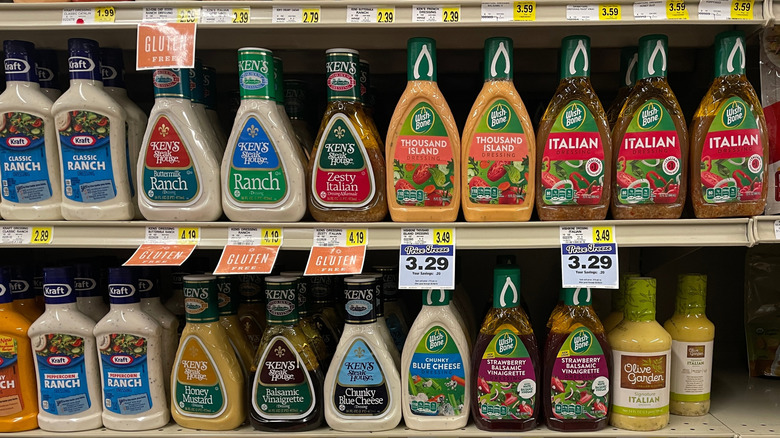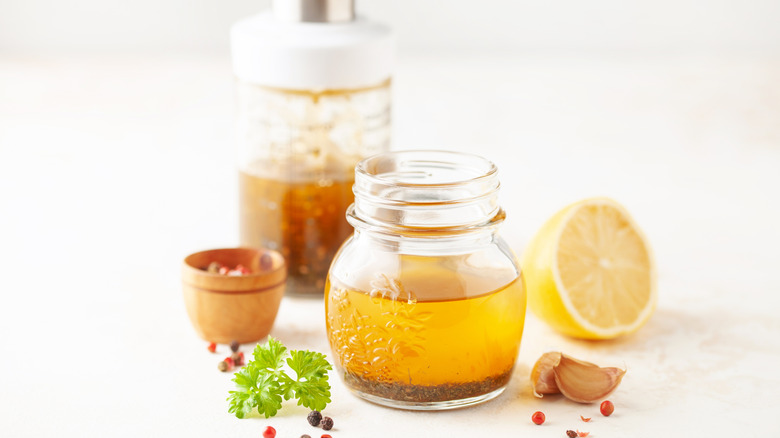The Variety Of Store-Bought Dressing You Should Avoid And Make At Home Instead
I'll be the first to say there's nothing more convenient than relying on a store-bought salad dressing to help jazz up some greens, especially when certain varieties, like creamy dressings, can sometimes taste better than homemade — I've never been able to make a homemade ranch taste quite like the best bottled ranch dressing. But there is one type of store-bought salad dressing I refuse to buy at all costs, and you should too: It's any kind and any brand of vinaigrette dressing.
Not only does it cost cents to make your vinaigrette, but it's far more tasty, and most importantly, it's as easy as one-two-three, literally! Just combine one part emulsifier, two parts vinegar (or any acid), and three parts oil in a mixing bowl or shake it in a glass mason jar with a lid and voilà! That's all that's necessary to create a fantastic homemade vinaigrette within minutes that can be stored in the fridge up to a week.
What's especially convenient about making a vinaigrette over buying one is the fact that most of us already have at least one kind of vinegar or acid, neutral-tasting oil, and some type of emulsifier to marry the vinegar and oil together. Once these three base ingredients are established, you can also play around with adding a mixture of fresh or dried herbs — like fresh chopped basil or dried oregano, perfect for a salad with Italian flavors, spices like smoked paprika or cayenne pepper, or aromatics like minced fresh garlic to add a little zing.
How to zhuzh up homemade vinaigrette
When making your own vinaigrette, opt for high-quality ingredients if possible; they tend to be the most flavorful and make a far tastier vinaigrette than store-bought. If you've ever glanced at the back of a store-bought vinaigrette, among a long list of additives and preservatives, you'll notice the main ingredients are often low-quality, flavorless, refined oils and white distilled vinegar. Ditch the bland by grabbing the best you've got on your shelf.
There's nothing more versatile than choosing a quality extra virgin olive oil for a homemade vinaigrette, but you can get creative and experiment with a variety of specialty oils, such as olive oils infused with flavors like garlic, lemon, or herbs — or more gourmet oils like toasted walnut or sesame. As for the acid, opt for flavorful vinegars that have a little punch, like balsamic, apple cider, or red wine, or fresh citrus juice like lemon, lime, or orange. Don't hesitate to think outside of the box, however. One of the best uses for leftover pickle juice around is to use it as your acid in a dressing. Of course, you could also follow Rachael Ray's tip of using the dregs of your jarred salsa to make a dressing, which is delish for a salad with Mexican or Spanish flavors.
Though you can make a vinaigrette without an emulsifier, it does help to include one for the overall flavor and stability. Dijon mustard is popular, but ingredients with similar binding characteristics will also work — think mayonnaise, miso paste, nut or seed butters, honey, or even fruit puree, like raspberries for a raspberry vinaigrette.

